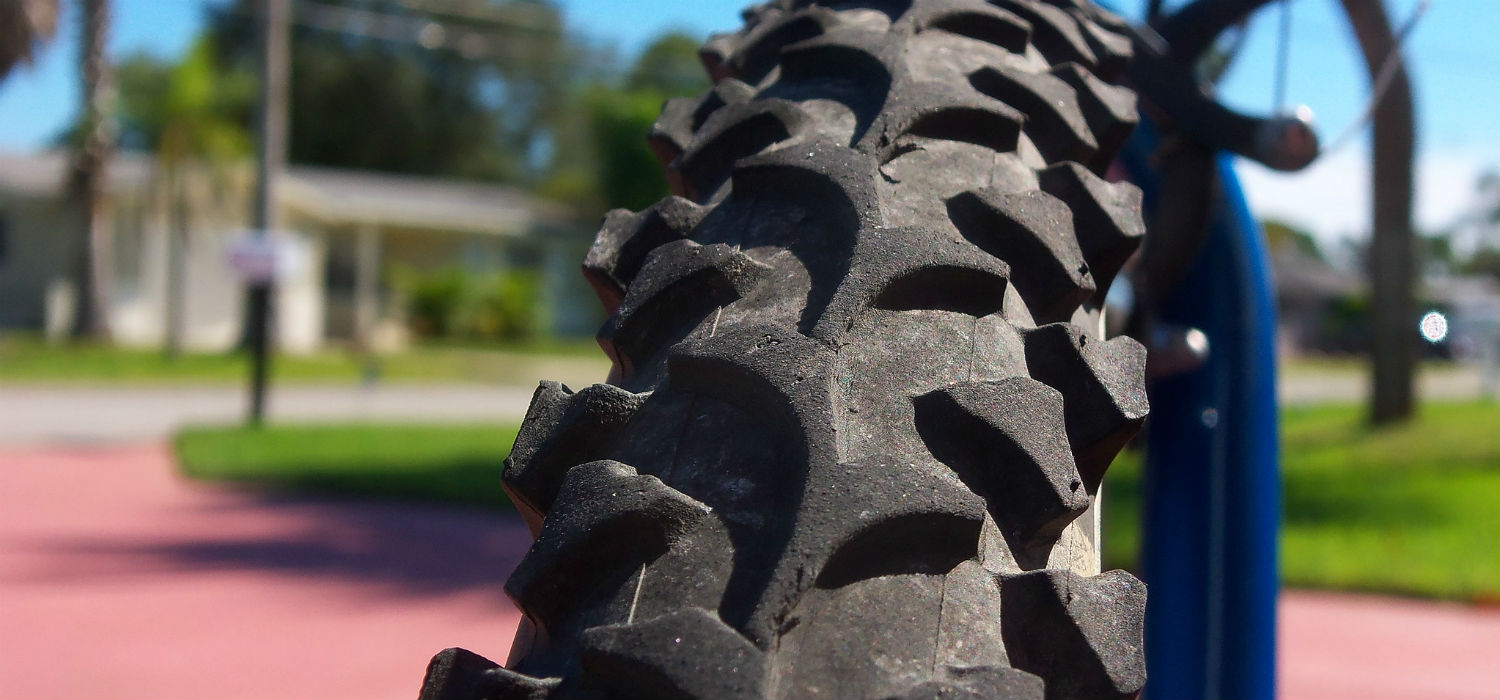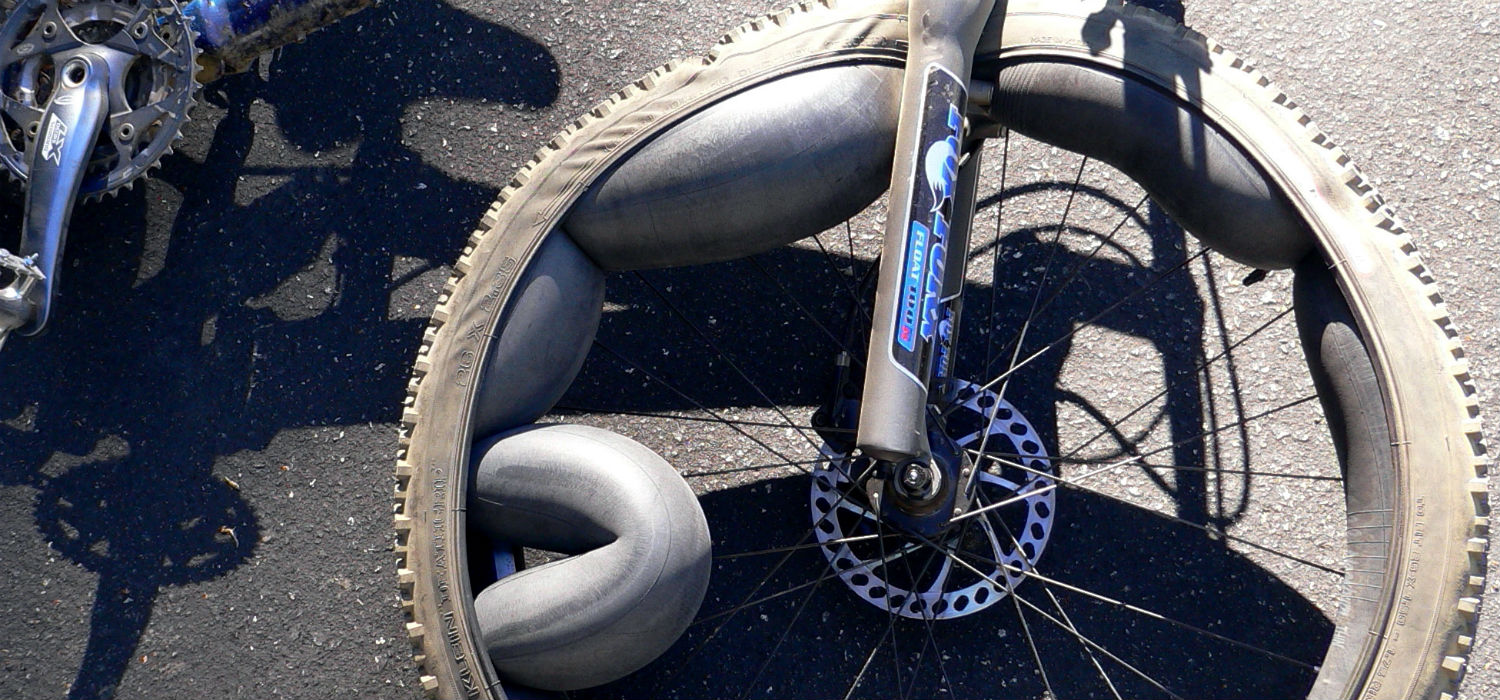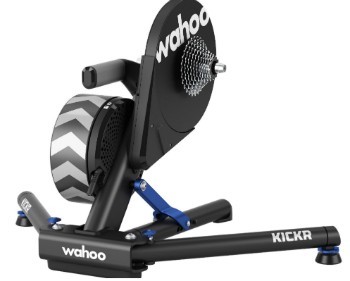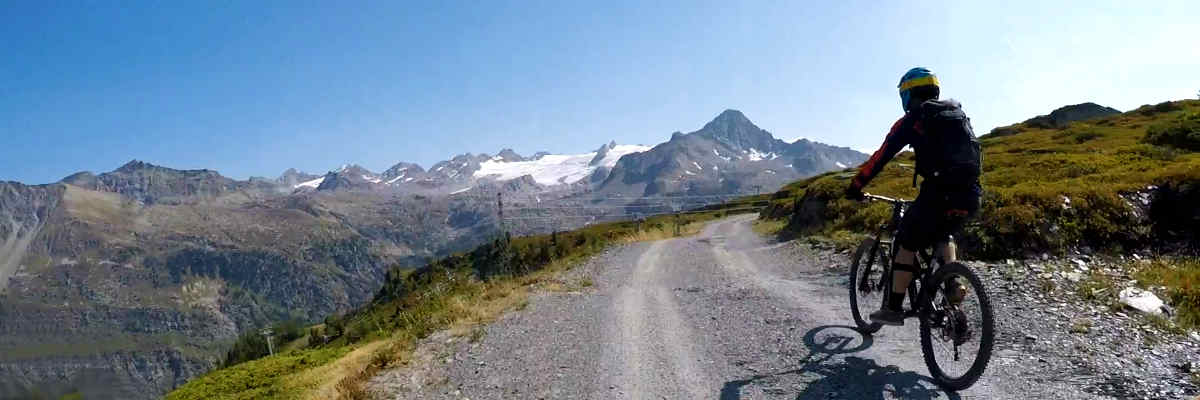Mountain Bike Tyres: Tubes or Tubeless?
I see a lot of people on various social media groups asking “Is it worth going tubeless?”. So hopefully I will be able to put the ultimate mountain bike tyres question to bed. Both systems have their advantages and disadvantages, I am going to cover all of them. Hopefully by the time you have got to the bottom of this page you will have made a decision of how you will keep you mountain bike tyres inflated.
Inner Tubes
Inner tubes are the traditional way that bikes use to keep air in their tyres. The inner tube sits inside the tyre, and has a valve for inflation that pokes through the wheel. The outer tyre doesn’t hold any air, it just provides the tread. It has a strong wire structure to reinforce it, making it tough enough for your ride.
Advantages and Disadvantages of Tubes
If you get a puncture during a ride, it is pretty easy to repair.
You can carry a puncture repair kit in your bag, but to make it even easier, most people just carry an extra inner tube. Before you buy an inner tube, make sure that you have the correct size and valve for your wheel. I bought one with the wrong valve once, and there was some swearing when I couldn’t poke it through my wheel.
The downside to mountain bike tyres with inner tubes, is that they can puncture very easily. Aside from the obvious sharp objects that can pierce the tube, you can also get “pinch flats”. This is when the tube can get, what looks like a snake bite, when air pressure builds up too much in one area. This can be caused when you land a jump heavily or hit a rock particularly hard.
Click here to see the best pumps for trail and home use
How does Tubeless Work?
As the name suggests, tubeless mountain bike tyres don’t have a tube, therefore the tyre itself is inflated. To use a tubeless mountain bike tyre, you need to make sure your wheel is compatible. The wheel needs to have a lip to allow the beading of the tyre to sit in, to form a strong seal. You can use inner tubes with these wheels and tyres as well, if you need to.
To make sure your tyre has a good seal, a tubeless tyre uses a liquid sealant and a valve stem.
Advantages and Disadvantages of Tubless
Tubeless mountain bike tyres are more durable than ones with an inner tube.
A tubeless tyre is actually heavier than its counterpart, but lighter overall as there is no need for the tube. The main advantage you will see, is the fact that the amount of punctures you get are reduced dramatically.
If you get a good tyre sealant, it will actually plug the puncture while you are riding.
Most of the time you will not know about it.
Riding with lower tyre pressures gives you a load more grip. This is not always possible with inner tubes, as it makes you prone to punctures. But riding tubeless will give you the benefit of letting a bit of air out, increasing the amount of tyre in contact with the ground.
Tubeless mountain bike tyres can be a bit tricky to put on. This is because the side walls are quite stiff. It can also be quite messy when dealing with tyre sealant. If you have a major failure of a tubeless tyre, such as a rip in the side wall, the sealant is not going to plug it. I carry a spare inner tube with me, for this very reason so I don’t get stranded.
Which will you use for your mountain bike tyres?
Now you know the advantages and disadvantages of both tubeless mountain bike tyres and ones with inner tubes.
It is fair to say, that tubeless mountain bike tyres are the way forward. Their advantages, out weigh the disadvantages bu a long way. Tell me what you think in the comments below.







Pingback: 2019 Vitus Mountain Bikes: What You Need To Know -
Pingback: Mountain Biking Essentials: Everything you need for Mountain Biking -
Pingback: Mountain Bike Equipment Beginners Need -